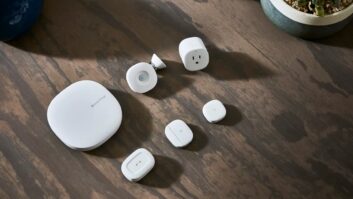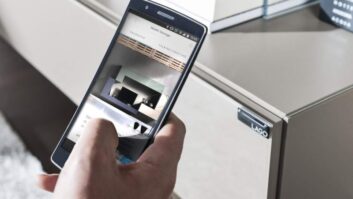REDWOOD CITY, CALIF. – Fifty percent of North American consumers ages 25 and older plan to buy at least one smart-home device in the next year, and purchase intent is even higher among U.S. consumers and among 25- to 34-year-olds, according to a consumer survey commissioned by home-automation platform provider Icontrol Networks.
Intent to buy is 54 percent among U.S. consumers. The survey questioned 1,600 North American consumers surveyed in the spring. A thousand were in the U.S.
Based on the population size of the 25-plus age group in North America, Icontrol said more than 114 million people plan to buy smart-home products in the next year.
The 25 to 34 millenial age group is more likely to buy in the next year than consumers overall, the survey also found. In the next 12 months, millennials indicated they were 62 percent more likely to purchase a smarthome hub, 61 percent more likely to buy smart-home services, and 59 percent more likely to buy connected lighting compared to the population as a whole, the study found.
What’s hot: Among the population as a whole, select products capture greater interest than others. They include self-adjusting thermostats, desired by 72 percent of all consumers surveyed; doors that can be locked from remote locations, 71 percent; a master remote to control all household preferences, 68 percent; automatic adjustable outdoor lighting, 65 percent; and home monitoring cameras, 65 percent.
Personal and family security remain one of the top reasons among 90 percent of respondents for getting a smart-home system, the same percentage as in a year-ago survey, but energy efficiency emerged as a growing motivation, Icontrol said. A total of 70 percent of consumers overall said they were “excited” about the potential costs savings from energy efficiency and monitoring, while 48 percent were excited about the convenience of programming home settings and maintenance. A total of 47 percent said they were excited about the positive environmental impact of energy efficiency.
Entertainment also emerged as a new driver of smart-home adoption. A total of 46 percent of consumers, up from the previous year’s 29 percent, listed entertainment – the ability to remotely control and monitor TVs and sound systems — as one of the top reasons to buy a smart-home system.
Age discrimination: People ages 50 and older were more excited about cost savings compared with the overall population, or 78 percent vs. 70 percent. Millenials, on the other hand, were more excited than all others about the following features:
• Greater productivity and work-life balance: 40 percent vs. 23 percent.
• Making it easier to enjoy music, movies and web surfing anywhere in the house: 26 percent vs. 18 percent.
• Helping anticipate needs such as minor repairs and shopping lists: 24 percent vs. 18 percent.
When to buy: The survey also found that consumers are most interested in buying when they’re making renovations or upgrades to their house. In the U.S., 43 percent of consumers said they’d be most willing to buy smart-home products when renovating or updating a home, followed by 25 percent who said they’d be more likely to do so when moving into a new home. Twenty-four percent would more likely be prompted when buying a new home. Only 3 percent said they’d be likely to do so when having their first child.
» Intent To Buy
Here’s what North American consumers ages 25 and older said they’ll likely buy in the next year:
» Connected cameras 37%
» Connected thermostats 37%
» Connected lighting 34%
» Connected door lock 34%
» Smart home hub 32%
» Smart-home services 31%
» Connected appliances 25%
Among millennials, the percentages shot up:
» Connected cameras 56%
» Connected thermostats 54%
» Connected lighting 54%
» Connected door lock 53%
» Smart home hub 52%
» Smart-home services 50%
» Connected appliances 50%
» Who You Know
People who know someone with a smart-home device are more likely than others to purchase a product in the next year, the survey also found. Intent to buy by those consumers, compared with the overall population, breaks out as follows:
» Connected cameras 70 vs. 37 percent
» Connected thermostats 69 vs. 37 percent
» Connected lighting 65 vs. 34 percent
» Connected door lock 66 vs. 34 percent
» Smart home hub 64 vs. 32 percent
» Smart-home services 61 vs. 31 percent













